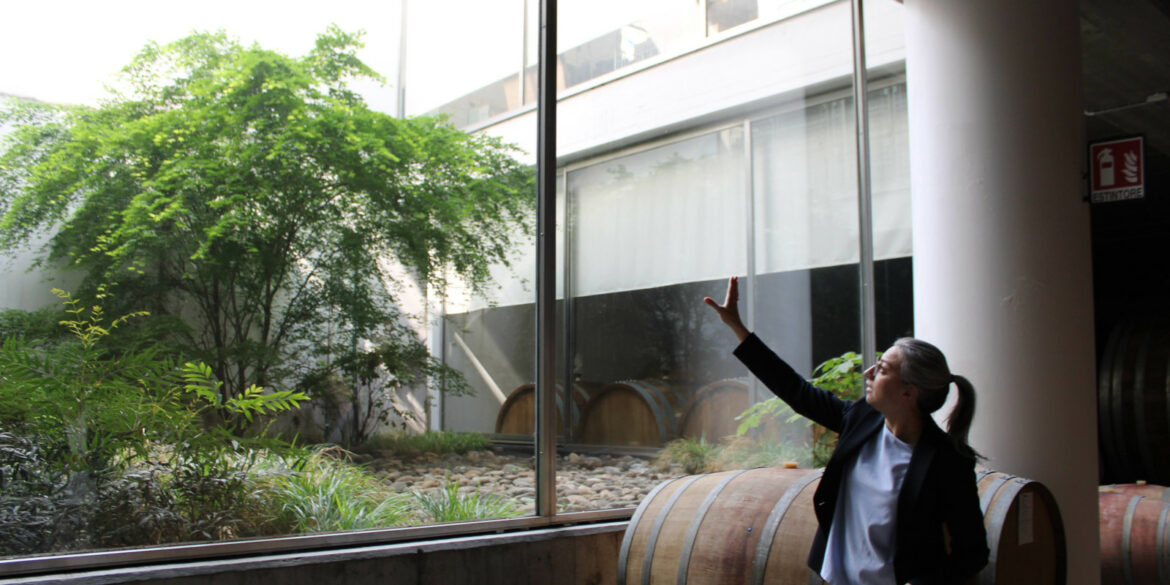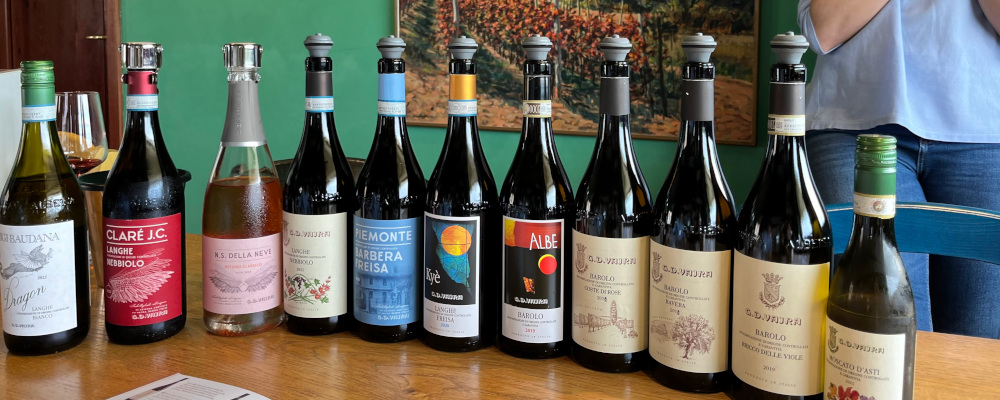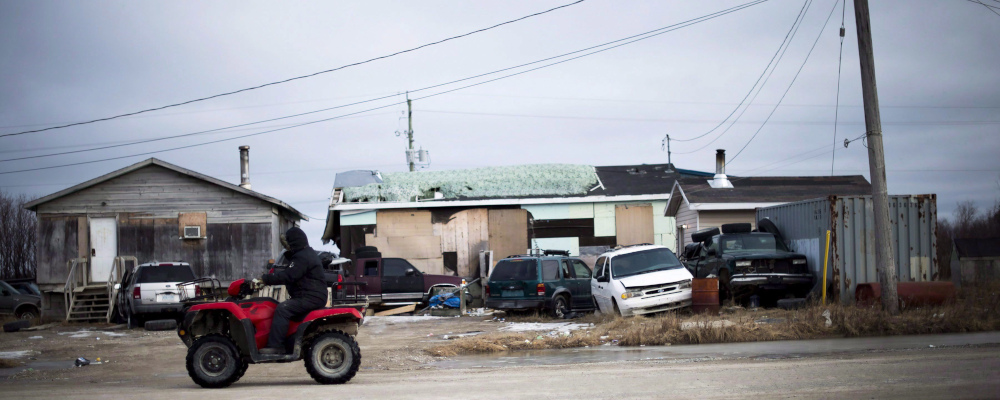Francesca Vaira is showing us the tree in the middle of the wine cellar at G.D. Vajra, her family’s winery not far from the town of Barolo. Or is it outside of the cellar? In fact it’s both. The tree is in a courtyard, glassed in from the cellar, which allows for natural light among the large oak botti vats used for elevating Vajra wines.
The tree is small, not a miniature like a bonsai, but diminutive because it does not receive much if any direct sunlight. Nor does direct sunlight reach the level of the windows of the large courtyard in the middle of a very large cellar. The indirect light that comes in is not hot, just illuminating.
The natural light is also pleasant, which Francesca explains is the point. Her family and those that work with them in the cellar will spend a lot of time working in what is usually a damp and dark place. The open-air terrarium of the courtyard is meant to soothe the souls of the people who work in the cellar.
My son, Alec (20) and I traveled to Piedmont in Northwestern Italy last week after attending a family event in the U.K. I had reached out to Francesca Vaira after sitting next to her at a dinner that was part of a press trip I took about five years ago. Her wines, the G.D. Vajra wines, were my favourite at the table. The Vajra wines are certainly renowned and celebrated in Barolo and beyond (and priced accordingly), but they’re also, in my humble opinion, an insider’s wine.
The winery visit was beginning to give me an insight into why G.D. Vajra occupies its own niche in the Langhe, the rolling white dirt hills in the southern shadow of the Alps, that famously makes the wines of Barolo and Barbaresco. Before visiting the tree, we began our tour in the fermentation cellar. There, giant stainless steel tanks are illuminated by long floor-to-ceiling panels of stained glass.
When Francesca’s parents, Aldo and Milena Vaira, built the fermentation cellar in the 1980’s they commissioned the renowned Franciscan monk-turned-artist Father Costantino Ruggeri to design the stained glass windows, which evoke the later collage works of Henri Matisse.
Just like the tree in the courtyard, the stained glass is meant to raise the spirits of the people working long hours in the winery. Those hours are especially long and protracted at Vajra, where they make wine from several varieties; not just Nebbiolo, but other reds like Dolcetto, Barbera, and Freisa as well as whites like Chardonnay, Sauvignon Blanc, Riesling, and the rare indigenous Piemontese grape Nascetta.
Different grapes ripen and mature at different times, so harvest at Vajra can last several weeks over a couple of months. As if to prove the purpose of the art in a utilitarian setting, Francesca bends over to move a large hose out of the way. The concrete floor is illuminated in primary blue, yellow, and red hues from the morning sunshine, and it’s hard not to feel uplifted, even for a small moment.
The Vaira family standard of care, of course, extends beyond how they treat their people. G.D. Vajra began as a kind of double act of rebellion in the tumultuous year of 1968. Teenage Aldo Vaira was a city kid attracted to the street demonstrations in Turin. His parents thought shipping him to stay with relations in the countryside would tame his rebellious nature.
The move backfired as Aldo became determined to resurrect the family tradition of farming, and particularly winemaking. By the time he had established the G.D. Vajra label, keeping for fun the misspelling from an old clerical error, he was farming organically and pioneering the ecological winemaking movement in the Langhe and Italy. This ethos was and is firmly shared by his wife Milena, daughter Francesca, and her two brothers Guiseppe and Isodoro, who now act as winemaker and vineyard manager, respectively.

As a young journalist, I was taught the inverted pyramid method, where one tries to get as much pertinent information into the first few paragraphs of a story on the presumption that most readers will stop after that, and if they don’t it’s because they’ve been hooked by that initial barrage of information. This column is surely proof that I have abandoned that technique, but on the subject of all the wines we tasted with Francesca, it may be worth beginning with the four Barolo wines, since they’re ultimately what the label is most famous for.
We started with the Albe 2019, their gateway Barolo, which is a blend of several of the Vajra vineyards. It’s recognizable from its bright and inviting label, which Francesca explained is meant to attract and reassure consumers unsure about trying Barolo. It generally retails at around $50 a bottle, which makes it a deal for the category. It’s a clear and classic Barolo, with notes of roses and tar over bright cherry. Just released, it’s young and grippy with tannins, but friendly with a bit of air.
The Albe was followed by three single vineyard Barolo. First, the Costa di Rose 2019, with more red fruit and some minty herbal character. Then, the Ravera 2019, more cherry, rose, and that herbal character, but maybe somehow a little more resonant. Finally, the Bricco del Viole, from the highest vineyard. Viole means violets, and it may be the suggestion of the name that evokes some of the darker cherry-to-black fruit notes I caught. All these wines were just released and very young, but absolutely delicious. One can only imagine how they’ll sing in a decade’s time or more.

Before we hit the Barolo, we tasted the Langhe Nebbiolo 2022, made from young vines not ready yet for the major labels. Clean, clear full of red fruit, and still well structured with fruit tannin. We tried the Claré JC Langhe Nebbiolo 2022, a pet project of Guiseppe Vaira. The Claré is meant to evoke pre-modern reds of the Langhe; ones that Thomas Jefferson, the 18th century’s greatest wine critic, admired. The irony is that it tastes (to me) thoroughly modern, clean, and certainly clear (like Claret) with juicy and moreish cherry notes.
The G.D. Vajra Kyè Langhe Freisa 2020 that we tasted also reflected the ethos of the Vaira family as well as any of their fine wines. Freisa is an old Piedmont red grape that was going the way of extinction until the efforts of winemakers like Aldo Vaira to preserve and replant it. Often made in a light quaffable style, as a kind of afterthought to making Nebbiolo or Barbera, Vajra shows it respect and makes a wine from it that is as serious as it is complex and delicious. Peppery and brooding with dark cherry, an enervating acid lift, and enough fruit tannin to hold it together. Wines made with love will always give it back.
G.D. Vajra wines can be found throughout Canada, subject to availability, etc. Google them with your home province, or contact me through comments or Twitter or mjwinebox.com and I’ll send you agent information.
Recommended for You

Malcolm Jolley: Cool Chardonnays for warm days

Malcolm Jolley: The LCBO strike was a spectacular misstep

Malcolm Jolley: Doug Ford is right. The LCBO has long outlived its purpose

Malcolm Jolley: What is rosé anyway?











